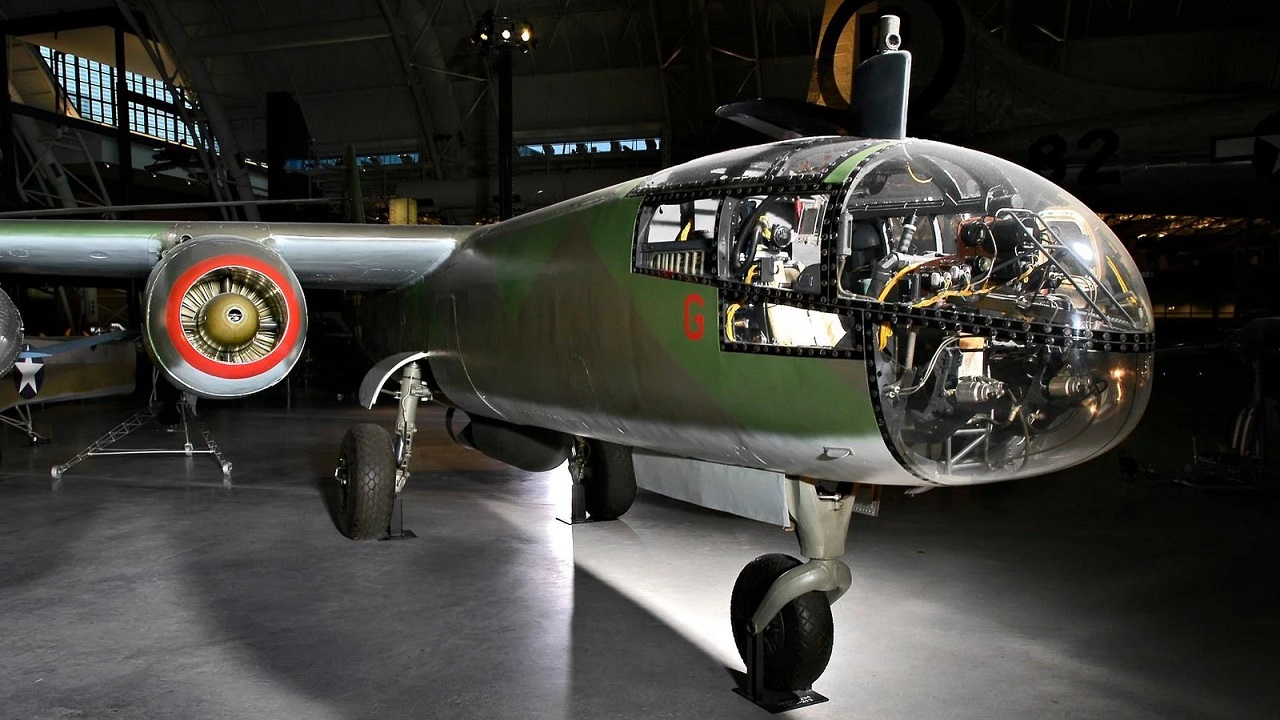Meet the Arado Ar-234: As I have mentioned in several articles, the Germans have long been innovators in weapons systems. It is one of those unfortunate quirks of history that much of this Teutonic creativity took place under the evils of the Nazi regime, especially in 1944, the year before the Third Reich fell. As noted by Aviation History columnist Don Hollway, “1944 was the year of the Wunderwaffen, German wonder weapons. King Tiger tanks. Jet fighters. Helicopters. Guided missiles. Cruise missiles. Prototype ICBMs. Railway guns. Long range superguns. Spurred by the specter of imminent defeat, projects that had been years in development were suddenly given highest priority, accelerated into production, and put into service.”
Hollway forgot to mention jet bombers, but Albert Speer’s Ministry of Armaments and War Production had this category covered as well: Meet the Arado Ar 234 Blitz (“Lightning”).
Birth of the Ar 234 Blitz Bomber
The Blitz made its maiden flight on June 15, 1943, but it didn’t enter service with the Reich until September 1944 – thus fitting the chronology mentioned above. It was manufactured by Arado Flugzeugwerke – certainly not a household name among military-aviation history buffs in the same way Messerschmitt, Focke-Wolfe, Fokker, or Junkers are. However, the company managed to produce a substantial number of aircraft during its 20 years of existence (1925 – 1945), and it cemented its place in history with the Ar-234. The Blitz‘s designer was Walter Blume (not to be confused with the infamous Waffen-SS war criminal of the same name). Blume had previously been a fighter ace, with 28 aerial victories, and was a recipient of the Pour le Mérite during the First World War.
Earlier variants of the Blitz had twin Jumo 004 B4-1 turbojet engines. Later versions were powered by four BMW 003 turbojets, though these iterations never went into full production. The Ar-234 had a max airspeed of 456 miles per hour, which was enough to easily elude the Allied fighters of the time. (Yes, Britain did have the Gloster Meteor jet fighter in service at the time, but elected not to use it for air-to-air missions against manned enemy aircraft.) For basis of comparison, America’s first jet bomber, th B-47 Stratojet — which didn’t come along until 1947 — had a top speed of 600mph.
The Blitz was 41 feet, 6 inches in length, with a wingspan of 47 feet, 3 inches. It had a maximum takeoff weight of 21,065 pounds, and its bomb load capacity was 3,309 pounds.
Bomber vs. Reconnaissance Usage
Historians have made a big deal about Adolf Hitler’s meddling with the true potential of the Messerschmitt Me 262 Schwalbe (“Swallow”) jet fighter by insisting the plane be developed as a bomber. Ironically, the Ar-234, which truly was a bomber, was actually designed in response to the Nazi Ministry of Aviation’s call for a jet-powered aerial reconnaissance aircraft, and that is indeed what most of its operational missions turned out to be.
That’s not to say that the warbird wasn’t used for bombing missions. The Ar 234’s first such mission took place on Christmas Eve 1944, over Liege, Belgium, during the Battle of the Bulge. As Smithsonian Magazine’s David Kindy writes:
“With savage fighting on many fronts, American troops at Liege were on high alert in case the Germans tried something there—though they didn’t expect what happened next. With the weather clearing, aircraft from both sides were flying once again. High above the Belgian city came the sound of approaching planes. The engine rumble from these aircraft was not typical, though. Rather than the reverberating growl of piston-driven engines, these aircraft emitted a smooth piercing roar. They were jets, but not Messerschmitt Me 262s, history’s first jet fighter. These were Arado Ar 234 B-2s, the first operational jet bomber to see combat. Nine of them were approaching a factory complex at Liege, each laden with a 1,100-pound bomb.
“Luftwaffe Captain Diether Lukesch of Kampfgeschwader (Bomber Wing) 76 led the small squadron on the historic bombing run…the sleek planes zoomed in to drop their payloads and then quickly soared away.”
However, the Blitz‘s performance as a bomber was fairly underwhelming. Quoth Mr. Kindy again:
“During a 10-day period in March 1945, the Luftwaffe flew 400 sorties against the bridge at Remagen in an effort to slow the Allied advance. Ar 234 B-2s from KG 76, as well as other German aircraft, made repeated attacks on the river crossing. All bombs missed their target.”
Moreover, just like with the Schwalbe jet fighter, the Blitz bomber had its vulnerabilities, especially when taking off and landing. In March 1945, USAAF P-51D Mustang pilot Capt. Don Bryan became the first fighter pilot to kill an Ar 234.
That said, the Blitz did achieve a final footnote in history before Nazi Germany’s surrender. In April 1945, it was the last Luftwaffe aircraft to fly over Great Britain during the war.
Where Are They Now?
Out of 214 Ar 234s built, there remains one sole survivor today. It is on display at the Smithsonian’s Steven F. Udvar-Hazy Center in Chantilly, Virginia.
Christian D. Orr is a former Air Force officer, Federal law enforcement officer, and private military contractor (with assignments worked in Iraq, the United Arab Emirates, Kosovo, Japan, Germany, and the Pentagon). Chris holds a B.A. in International Relations from the University of Southern California (USC) and an M.A. in Intelligence Studies (concentration in Terrorism Studies) from American Military University (AMU). He has also been published in The Daily Torch and The Journal of Intelligence and Cyber Security. Last but not least, he is a Companion of the Order of the Naval Order of the United States (NOUS).

